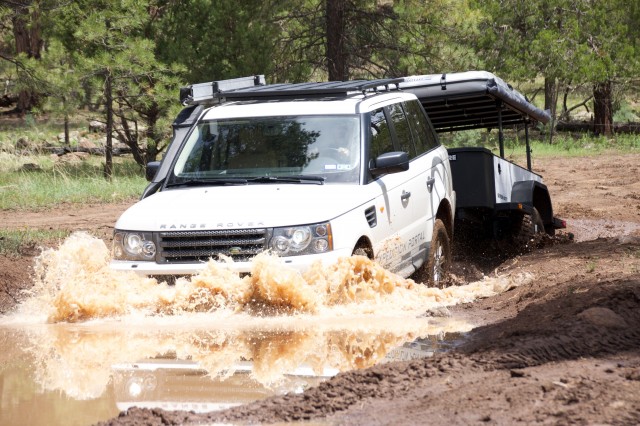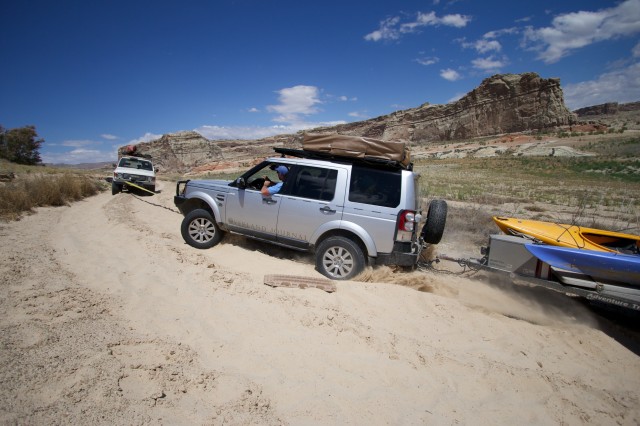Before I spent my weekends exploring the Arizona back country, most of my time was used training in small aircraft for my pilot’s license. There’s a lot of important information in aviation that crosses over to back country travel, checklists, pre-flight inspections, and maintenance logs to name a few, but one of the most basic things you complete before leaving the ground is a weight and balance of your aircraft. Why bother? Because if you don’t the plane may not leave the ground, or worse, return to it rapidly against your will. While not quite as drastic as in aircraft, these same principles apply to towing a trailer.
An overweight or improperly loaded trailer can lead to excessive wear, poor mpg, poor handling, loss of control, rollovers, and even catastrophic equipment failure, all of which at a minimum will leave you stranded in the bush without help. So this is all well and good, but how do we remedy the situation and stay safe? How do we know if our trailer is balanced and loaded properly? Well the first step is figuring out where the heck your trailers CG (center of gravity) is. I realize that this is easier said than done, which is why we’ve created this quick guide. Start with the checklist below.
- READ THIS ARTICLE.- It will give you an understanding of just what these crazy numbers, designations, and ratings mean. I know, reading two articles in a day? The reality is that the theory and reasoning behind everything we’re doing here is explained in there. If you want to make heads and tails of this thing it requires at least a brief glance before proceeding on with this list.

- Weigh your trailer – This can be done at almost any truck stop. Most will just require you to grab a number, park on the scale, and pay a small fee, but make sure to tell them you’re a private party, it may make a difference on your fees. If there are no truck stops near you, the local dump will also have a scale and may allow you to weigh the trailer there.
- Visit this wonderful site – It contains instructions, details, and an easy to use spreadsheet for calculating your trailer’s tongue weight and CG. The end result should come to 60% of the trailer load in front of the axle and 40% behind. If you need additional guidance on making this work for your setup, check out this site which contains examples for cargo trailers similar to an m416 or cargo trailer.
- Go adjust your trailer! – Chances are that even the best guesser isn’t right on the 60/40 mark the first time. You’ll want to start playing with the spreadsheet and seeing how close you can get.
- Feel confident and safe – There’s something to be said for having peace of mind on the road, and now that your trailer is within all its limits you can drive confidently. Additionally, if you have friends with trailers you can do a little bragging about the advanced calculations and balancing you’ve done. If you’re feeling generous you can let them in on the secret or, for a modest fee of beer, offer to balance theirs. The choice is yours.




